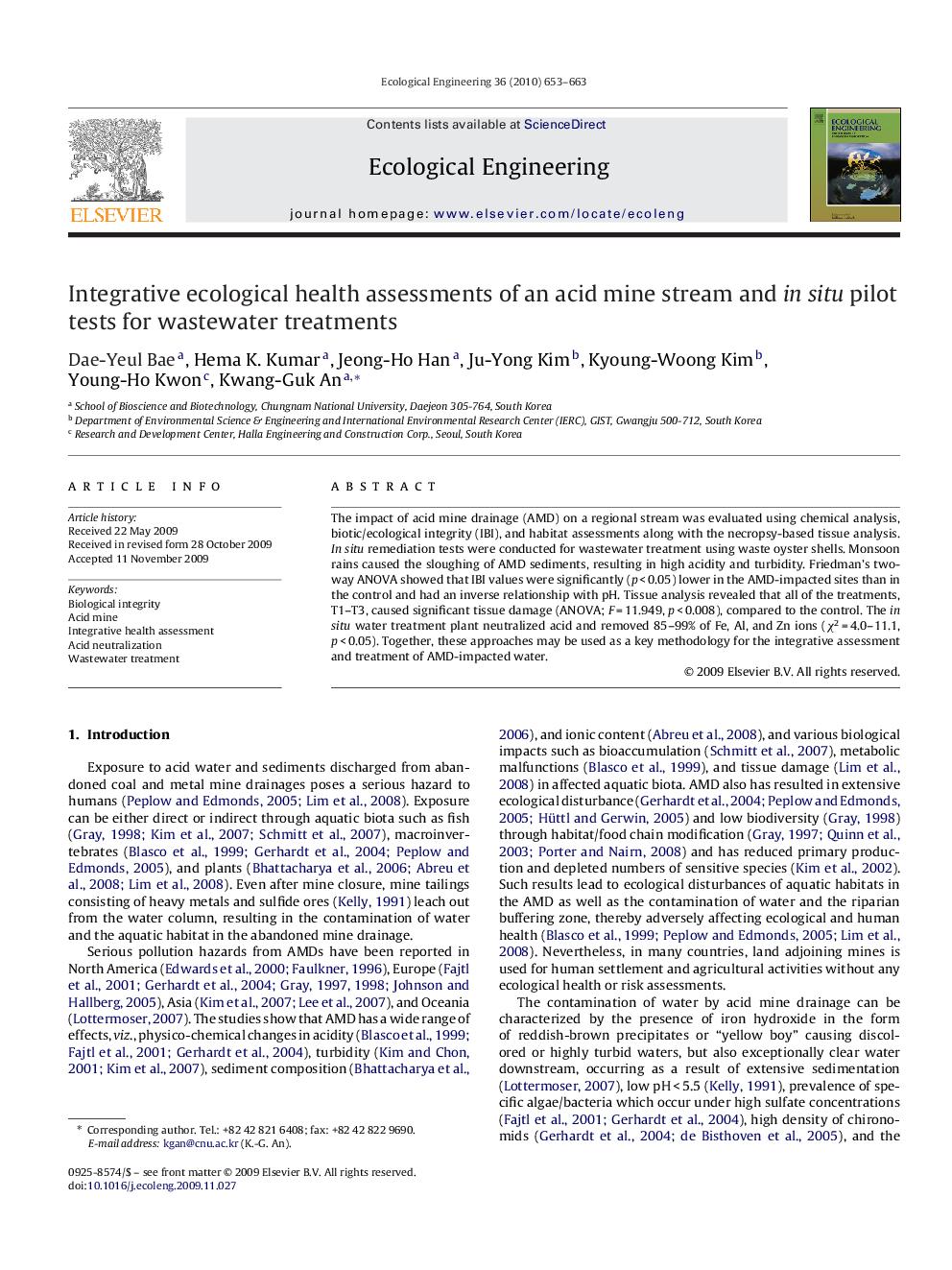| Article ID | Journal | Published Year | Pages | File Type |
|---|---|---|---|---|
| 4390630 | Ecological Engineering | 2010 | 11 Pages |
The impact of acid mine drainage (AMD) on a regional stream was evaluated using chemical analysis, biotic/ecological integrity (IBI), and habitat assessments along with the necropsy-based tissue analysis. In situ remediation tests were conducted for wastewater treatment using waste oyster shells. Monsoon rains caused the sloughing of AMD sediments, resulting in high acidity and turbidity. Friedman's two-way ANOVA showed that IBI values were significantly (p < 0.05) lower in the AMD-impacted sites than in the control and had an inverse relationship with pH. Tissue analysis revealed that all of the treatments, T1–T3, caused significant tissue damage (ANOVA; F = 11.949, p < 0.008), compared to the control. The in situ water treatment plant neutralized acid and removed 85–99% of Fe, Al, and Zn ions (χ2 = 4.0–11.1, p < 0.05). Together, these approaches may be used as a key methodology for the integrative assessment and treatment of AMD-impacted water.
